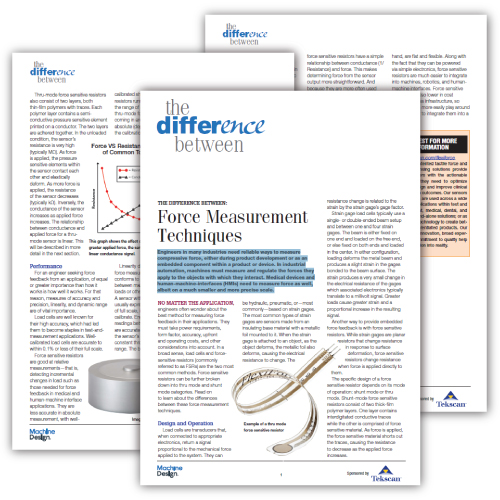 Engineers in many industries need reliable ways to measure compressive force, either during product development or as an embedded component within a product or device. In industrial automation, machines must measure and regulate the forces they apply to the objects with which they interact. Medical devices and human-machine-interfaces (HMIs) need to measure force as well, albeit on a much smaller and more precise scale.
Engineers in many industries need reliable ways to measure compressive force, either during product development or as an embedded component within a product or device. In industrial automation, machines must measure and regulate the forces they apply to the objects with which they interact. Medical devices and human-machine-interfaces (HMIs) need to measure force as well, albeit on a much smaller and more precise scale.
When considering force measurement and sensing technologies for an application, engineers must take power requirements, form factors, sensor accuracy, upfront and operating costs, and other factors into their choice. In a broad sense, load cells and force-sensitive resistors (like FlexiForce touch sensors) are the two most common methods.
This published article download breaks down the specific differences between load cells and force-sensitive resistors as force measurement techniques.
For more info we lay out the 5 key areas that Flexiforce premium FSRs with built with Thru-mode technology outperform the competition, backed with independent research data in this infographic.
When you are ready to compare embedded sensors, visit our online store, or contact us for engineering support and product advice for your pressure or force sensing application.
